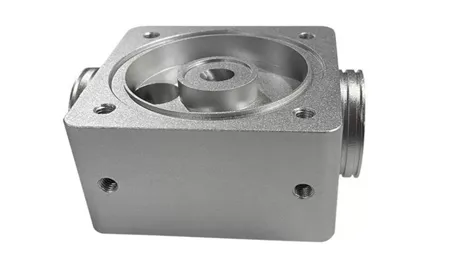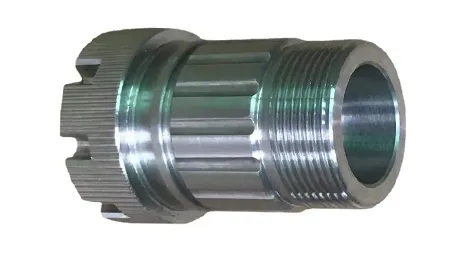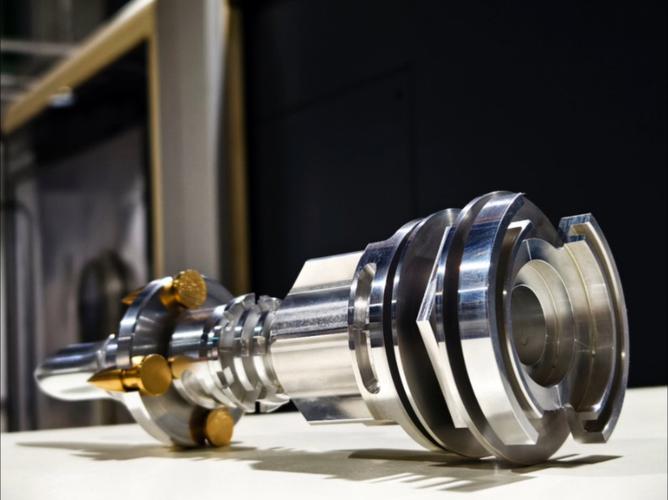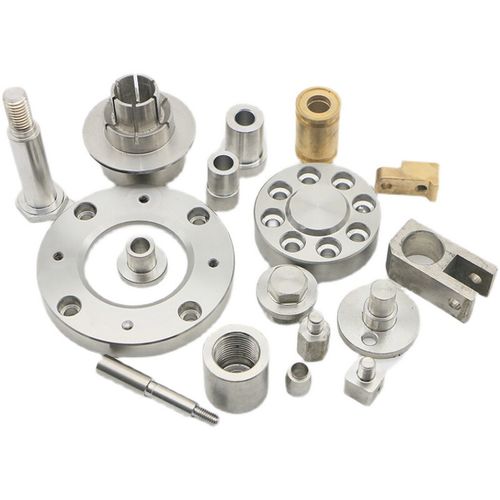CNC machining service is a service model that utilizes CNC machine tools to machine parts. CNC machine tools control the movement of the machine through a preset program to achieve accurate processing of the workpiece. This service mode not only improves processing accuracy and efficiency, but also reduces manual intervention and error, which is an integral part of modern manufacturing.
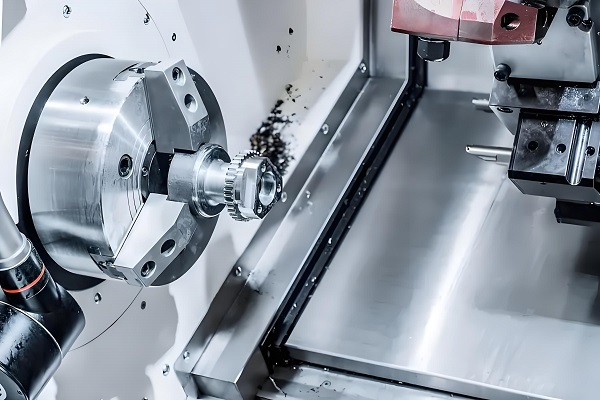
1.CNC service content
CNC programming services: According to product drawings and design requirements, the machining process is converted into an instruction code that can be understood by the machine tool. This involves complex algorithms and process knowledge to ensure the accuracy and efficiency of the machining process.
CNC Machine Operation and Maintenance: Professional operators are responsible for the day-to-day operation of CNC machines to ensure the smooth completion of machining tasks. At the same time, regular maintenance work is essential to extend the life of the machine and maintain its high accuracy.
Customized solutions: Provide personalized CNC machining solutions to meet the specific needs of different customers. This includes choosing the right machine model, tool and machining process, etc. to achieve optimal machining results and cost-effectiveness.
Technical Consultation and Support: Provide customers with technical consultation and support on CNC machine tools, machining processes, material selection and other aspects. Help customers to solve problems encountered in the machining process, improve machining efficiency and product quality.
2.CNC service process
CNC service process is a systematic and precise process, which covers all aspects from receiving orders to completing processing and delivering products. The following is a detailed introduction to the CNC service process:
Demand analysis and customer communication
Receive orders: First, CNC service center receives the customer’s processing orders, which usually include product drawings, processing requirements, material specifications and other information.
Demand analysis: engineering staff carefully analyze the drawings and requirements provided by the customer, clear machining objectives, accuracy standards, material properties and other key information.
Customer communication: Maintain close communication with customers to ensure an accurate understanding of the machining requirements and adjust the machining program as needed.
Process design and programming
Process design: According to the product drawings and machining requirements, design a reasonable machining process route, including the selection of cutting tools, determining cutting parameters, arranging the machining sequence and so on.
CNC programming: the use of CAD / CAM software or manual programming, the machining process into a CNC machine can be recognized by the CNC program. Programming process needs to consider machine performance, material characteristics, processing efficiency and other factors.
Production preparation and commissioning
Preparation of machine tools: select the appropriate CNC machine tools according to the processing task, and carry out the necessary warm-up and debugging work to ensure that the machine tool is in the best working condition.
Preparation of tooling and fixture: design and make suitable tooling and fixture for fixing the workpiece and ensuring the stability and accuracy of the machining process.
Program loading and debugging: load the prepared CNC program into the machine control system and carry out empty running debugging to check whether there is any error in the program and ensure that the machining path is correct.
Machining production
Workpiece clamping: install the workpiece to be machined onto the work fixture and carry out the necessary centering and fixing work.
Start machining: Start the CNC machine tool and carry out machining production according to the CNC program. During the machining process, the operator needs to pay close attention to the running status of the machine tool and the machining quality to ensure that the machining process is carried out smoothly.
Process monitoring: real-time monitoring of the machining process, including cutting force, cutting temperature, vibration and other parameters, timely detection and treatment of abnormalities.
Quality Inspection and Delivery
Quality Inspection: After machining is completed, quality inspection of the workpiece is carried out, including dimensional measurement, shape and position tolerance checking, surface roughness testing, etc., to ensure that the quality of machining meets the customer’s requirements.
Trimming and Reworking: Trimming or Reworking the unqualified workpieces until they reach the qualified standard.
Delivery of products: The qualified workpieces will be cleaned, rust-proofed and packaged for delivery to customers. At the same time provide necessary processing reports and quality documents.
Continuous Improvement and Feedback
Customer Feedback Collection: Regularly collect customer feedback to understand the customer’s satisfaction with the processing quality, service efficiency and other aspects.
Continuous Improvement: Based on customer feedback and internal quality control data, continuous improvement and optimization of CNC service process is carried out to improve machining accuracy and efficiency and enhance customer satisfaction.
3.CNC service application fields
CNC services are widely used in various fields, including but not limited to:
Machinery manufacturing: used to process various mechanical parts, such as engine blocks, crankshafts, gears and so on.
Aerospace: for manufacturing high-precision, complex-shaped aerospace parts, such as engine blades, turbine disks, etc.
Automobile manufacturing: used for processing body covering parts, engine parts and other key components.
Mold Manufacturing: Manufacturing various injection molds, stamping molds, etc. to meet the manufacturing industry’s high precision and long life requirements for molds.
Electronic and electrical appliances: processing the shell of electronic products, heat sinks and other parts to ensure the accuracy and appearance of the product quality.
4.Features of CNC service
High precision: CNC machine tools adopt advanced control system and precision transmission mechanism, capable of realizing micron-level machining accuracy to meet the processing needs of high-precision parts.
High efficiency: with high degree of automation, it is able to continuously carry out multi-process machining and significantly shorten the machining cycle. At the same time, through the optimization of the machining path and parameter settings, the machining efficiency can be further improved.
Flexibility: It can realize the machining of parts of different shapes and sizes by modifying the program, which is highly adaptable. In addition, customized machining services are also available according to customer needs.
Traceability: The machining process can be recorded for quality control and problem analysis. By tracing the key parameters and data in the machining process, problems can be found and solved in time, improving the stability of product quality.
CNC Service FAQ
1. What are the main contents of CNC service?
CNC services mainly include CNC programming services, CNC machine operation and maintenance, customized solutions, and technical consultation and support. Specific content covers the preparation of CNC programs according to product drawings and design requirements, operation of CNC machine tools for processing production, provide personalized processing solutions, and provide customers with technical advice and support on CNC machine tools, machining processes, material selection and other aspects.
2. How to ensure the machining accuracy of CNC service?
The machining accuracy of CNC service is mainly guaranteed through the following aspects:
High-precision machine tools: Selection of CNC machine tools with high precision to ensure that the machining capacity of the machine itself meets the requirements.
Accurate Programming: Adopt advanced CAD/CAM software for CNC programming to ensure the accuracy of the machining path and cutting parameters.
Strict quality control: real-time monitoring during the machining process, monitoring the cutting force, cutting temperature, vibration and other parameters to ensure the stability of the machining process. Quality inspection after machining is completed, including dimensional measurement, shape and position tolerance checking, surface roughness testing, etc., to ensure that the machining quality meets the customer’s requirements.
3. What is the lead time for CNC services?
The delivery period of CNC service varies according to the specific machining tasks, but it is usually reasonably arranged according to the urgency and machining complexity of the customer. Generally speaking, the lead time for commonly used specification models is shorter and may be completed within 5 to 7 working days. For non-common specification products or special customized products, the delivery period may be relatively longer, but we will fully communicate with customers and try to shorten the delivery period.
4. What materials and processing methods does CNC service support?
CNC services support a wide range of materials and processing methods, including but not limited to metal materials (e.g. steel, aluminum, copper, etc.), plastic materials, and composite materials. The machining methods include continuous machining, multi-axis simultaneous machining, deep hole machining, etc., which can meet the diversified machining needs of customers.

